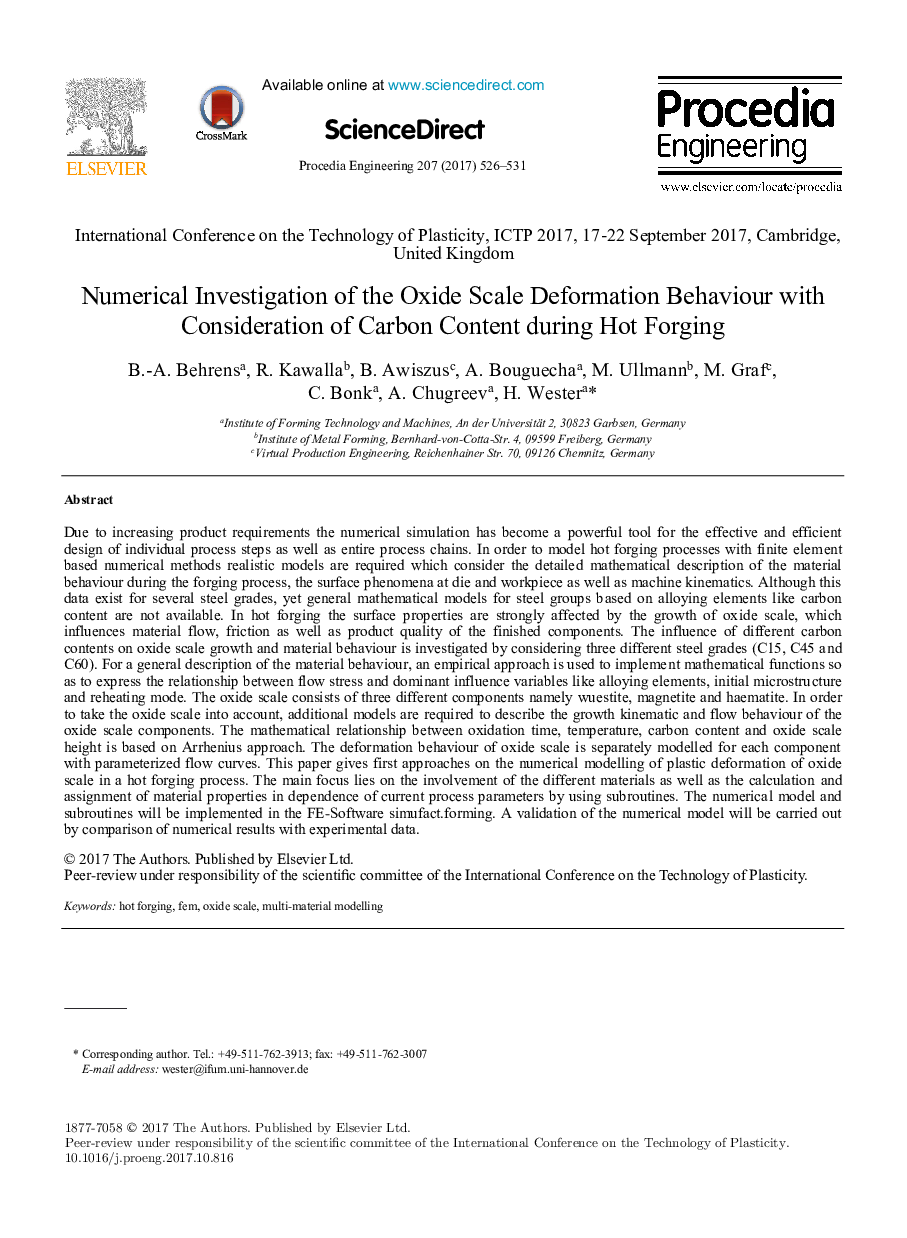| Article ID | Journal | Published Year | Pages | File Type |
|---|---|---|---|---|
| 7227249 | Procedia Engineering | 2017 | 6 Pages |
Abstract
Due to increasing product requirements the numerical simulation has become a powerful tool for the effective and efficient design of individual process steps as well as entire process chains. In order to model hot forging processes with finite element based numerical methods realistic models are required which consider the detailed mathematical description of the material behaviour during the forging process, the surface phenomena at die and workpiece as well as machine kinematics. Although this data exist for several steel grades, yet general mathematical models for steel groups based on alloying elements like carbon content are not available. In hot forging the surface properties are strongly affected by the growth of oxide scale, which influences material flow, friction as well as product quality of the finished components. The influence of different carbon contents on oxide scale growth and material behaviour is investigated by considering three different steel grades (C15, C45 and C60). For a general description of the material behaviour, an empirical approach is used to implement mathematical functions so as to express the relationship between flow stress and dominant influence variables like alloying elements, initial microstructure and reheating mode. The oxide scale consists of three different components namely wuestite, magnetite and haematite. In order to take the oxide scale into account, additional models are required to describe the growth kinematic and flow behaviour of the oxide scale components. The mathematical relationship between oxidation time, temperature, carbon content and oxide scale height is based on Arrhenius approach. The deformation behaviour of oxide scale is separately modelled for each component with parameterized flow curves. This paper gives first approaches on the numerical modelling of plastic deformation of oxide scale in a hot forging process. The main focus lies on the involvement of the different materials as well as the calculation and assignment of material properties in dependence of current process parameters by using subroutines. The numerical model and subroutines will be implemented in the FE-Software simufact.forming. A validation of the numerical model will be carried out by comparison of numerical results with experimental data.
Keywords
Related Topics
Physical Sciences and Engineering
Engineering
Engineering (General)
Authors
B.-A. Behrens, R. Kawalla, B. Awiszus, A. Bouguecha, M. Ullmann, M. Graf, C. Bonk, A. Chugreev, H. Wester,
